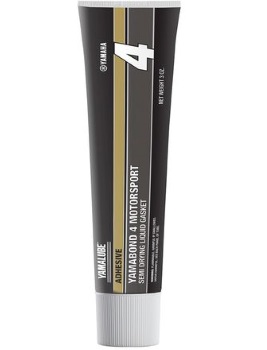
Some say Yes, we say No.
It makes perfect logical sense to use a spray or silicon sealant along with a gasket when, for example, replacing a cylinder head gasket on your dirt bike. The more sealant, the better the seal and much less chance of a leak, right?
Not really.
Manufacturers already make gaskets to perform as advertised without the need to add a layer of extra sticky stuff, otherwise, they'd suggest adding extra sticky stuff when applying the gasket. Even slight imperfections on a clean, dry gasket prove no match for two heavy pieces of metal torqued into place. Therefore, don't worry about a leak after replacing an old gasket the next ride day. If it leaks it's either because you installed the gasket wrong or another problem looms.
So, why do spray sealants exist and why do we sell products from Threebond that bills several of their sealants as a "Gasket Maker?" In some cases, sealant is necessary. We'll try to break it down so you understand when not to use sealant, when to use sealant and what sealant to use when using it. Make sense?
When NOT to Use Gasket Sealant
Don't use it on head gaskets. Unless the service manual specifically says to use sealant on the head gasket (and we have yet to see one that does) you'll end up with a mess later and quite possibly a leaky gasket. Most of that spray sealant or any sealant for that matter eventually breaks down and causes leaks or degrades the gasket, causing leaks.
Also, don't use sealant for the sake of using sealant. It's tempting to use it everywhere, just because. More doesn't always equal better and in this case adding unnecessary sealant simply causes a mess at best, and at worst, possibly lots of time and money later when it breaks down and other parts fail.
Finally, don't use Sealant A on something requiring Sealant B. All men are created equal, but not all sealants are equally manufactured. Some sealants work best on metal to metal applications while another works far batter on metal to plastic bonds.
When to USE Gasket Sealant
Well then, what's the point of sealant if you can't use it? You can use it. In fact, you can use it on a leaky gasket. See that's probably where the confusion comes when using sealants and gaskets together. Sealants work great as temporary fixes but eventually if a gasket leaks you'll need to replace the gasket.
Using sealant as a temporary fix for leaks only works with paper gaskets like on a clutch, ignition or water pump cover. It still requires disassembly but you can add sealant and keep riding until the new gasket arrives.
Also, refer to your service manual. If the manufacturer recommends using sealant in a certain spot, use sealant. You might need to add a smudge here and there on the more thin areas of a specific gasket or just a touch to help keep a gasket in place during installation. Rubber plugs on timing and valve covers sometime need a small amount of sealant at the base or arch of the plug to prevent oil from running under the plug. Rubber and plastic expand and shrink so a dab of sealant ensures a lasting seal.
Crank cases without a gasket (like in the photo above) require the use of a sealant like Yamabond and Hondabond or similar which brings us to...
WHAT Gasket Sealant to Use
Recall our earlier declaration that not all sealants are created equal. Hondabond is OEM specific but several varieties exist. Same with Yamabond for Yamahas. Refer to the service manual for the specific sealant for use on those parts not using a solid gasket but require a seal.
ThreeBond, an aftermarket sealant, makes several types of "gasket makers" including #1215 which substitutes for some OEM sealants, like Yamabond, or recommended by others, like Polaris. ThreeBond primarily makes "OEM specific" sealants so check for the specific type required on your machine.
Finally, most gasket sealants don't require much curing time, instead offer immediate or day-of use once applied. But prior to heading out for the day double check before rolling the throttle.











